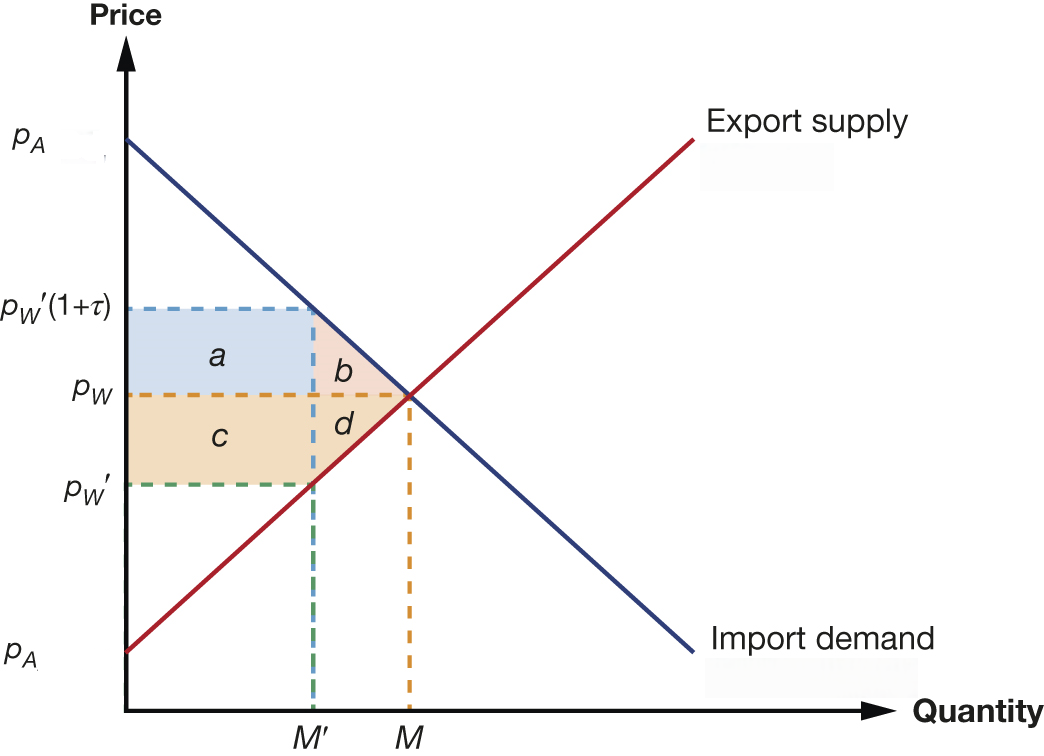From Reuters:
In an interview with NBC’s Meet the Press that aired on Sunday, Trump said he did not believe that consumers ultimately pay the price of tariffs, adding “I think they’re beautiful.”
Not sure where the first statement comes from. Tariffs for national security grounds are one thing (although I’m pretty sure we didn’t have much to fear from Canada depriving us of aluminum, in Trump’s rounds of Section 232 actions). But getting rich? When? Where? How?
On the quote, well, if the United States is a large country in trade, in theory a tariff can change the terms of trade so as to impose the de facto costs on the foreign country — or rest of the world (although legally, the payments to the US Treasury are made by the purchasers in America). Here’s an edited version of the explanation, from Chinn and Irwin, International Economics (Cambridge University Press, 2025):
Consider a country that imposes a tariff τ:
Source: Chinn and Irwin, Chapter 9 (modified).
So, by imposing a terms of trade loss on the rest-of-the-world, Home welfare can be improved if the area c-b is positive.
What’s key is that P’W is below PW by a substantial amount, and this is an empirical question. And the empirics suggest that this has not been the case in terms of the US vs. China, or even the US vs. the rest-of-the-world.
I don’t think I’m dogmatic about tariffs (there are second-best arguments for tariffs, infant industry arguments, etc.) which my coauthor Doug Irwin discusses in the textbook at length. For me, I think second-best means second-best, first best would be better (subsidies to internalize externalities); and I don’t think steel in the US is still an infant industry.
So, tariffs not so beautiful to me…

Have tariffs ever made anybody rich?
Respectful question: why are you using a partial equilibrium framework and not general or international? Is it just pragmatic for visualizing and discussing or otherwise.
Recovering Economist: Ease of exposition. Textbook has general equilibrium, but no offer curves.
very nice chart. the book looks promising !
Shall we see the D area (a DWL) as something representing “exporter surplus” lost ? and so a DWL born by RoW (no impact on home welfare) ?
thanks !
rafaminos: In partial equilibrium, area D is producer surplus lost, but not gained by consumers.